Circular Solutions and Real Housewives
Dec 6, 2023
This week I write about Sutton Stracke, one of the Real Housewives of Beverly Hills. (I bet you didn’t see that coming!) There’s an interesting sustainability/circularity story here that I’ve been following and wanted to share with you all. I’m curious to know what you think (feedback encouraged!).
Some important context: as most of you know, no brand sells 100% of what it makes. Brands hope to sell the majority of what they make, and an 80% sell through rate is super successful, although that still leaves 20% of product unsold. It is my understanding that a ‘normal sell through rate’ is anywhere between 40-80% which is a huge spread, I know. It helps us understand that there is almost always a significant amount of unsold product every month, season and year. The US apparel revenue for 2023 is projected to be about $350 billion, so we are talking about at least 20% of that, or $70 billion, being unsold products. That’s A LOT of product.
A simplified version of what happens:
Brand forecasts how much of one product, let’s say a shirt, it wants to produce based on their buyer and internal interests (commitments). This usually happens many months ahead of when the item will be in stores as the production and shipping process takes a long time for our largely global brands.
Brand works with global manufacturers to produce this shirt and get it into the brand’s warehouse(s) where it will be sent to the brand’s stores and partners; ecommerce items are kept in the warehouse for fulfillment from there.
The shirt is first sold at full price, say $100. This is where the brand has the most potential to make the biggest profit on their product.
If the shirt is selling slowly, the brand will lower the price, let’s say 20%, to $80.
As the selling season goes on, the shirt may be further marked down if it is not selling well. Let’s assume by the end of 3 months in the store it has been marked down to $60.
The store may then take that shirt out of its’ full-price stores and send it to its’ outlet, or discount, stores where it will be further discounted. Let’s assume that the shirt is priced at $40 in the outlet.
The shirt may sell at the outlet for another 2 months and be further discounted to $20. At this point the brand just wants to sell the shirt for any amount to get it out of inventory and to make some of their money back .
If the shirt doesn’t sell in the outlet, it may be grouped together with all of the other unsold merchandise (20%+ of everything the brand makes) and sold to a jobber, someone who will buy everything the brand doesn’t want and figure out how to make money on it.
It’s also important to note that some brands never want to have their product discounted and will sell items to a jobber much sooner with the condition that their branded product is never resold. In some cases, brands pay to have their items destroyed or incinerated so they can be confident their product will not be resold.
So, that leaves us with a large quantity of unsold clothes.
Which brings us to this week’s profile. Retail Reworks (Brian Adams is the founder) is a circular solutions provider who offer cleaning, repair, alteration and single SKU fulfillment (treating every item as 1 of 1 instead of 1 of 100). Retail Reworks has relationships with jobbers who have giant warehouses full of merchandise that brands and manufacturers never sold.
Enter Sutton Stracke, a long time acquaintance of Brian’s. I met Brian and Sutton recently at the Yale Club in NYC. It was an adventure. Sutton was dressed to the nines (appropriate usage of this phrase- Gucci coat, leopard print form-fitting dress, large diamonds) and was stopped by a most adoring fan. I felt underdressed in my jeans and wool, grandma cardigan, but oh well, that’s me. The three of us sat for an hour to discuss Brian and Sutton’s venture, Sutton Brands. Sutton is a longtime fashion lover, and through her friendship with Brian she began to learn about sustainability and circularity for fashion. She says she wants to be part of the solution, not part of the problem.
The Solution
So, their solution is to buy a curated selection of products from jobbers, delabel and relabel them (sometimes also altering the products) and sell them under Sutton Brands. Sutton will curate unsold products from jobbers’ warehouses- she picks what she wants on her line from the unsold inventory. Retail Reworks then takes that product and physically takes any branding and labeling off of it, effectively making it a product without a brand. Retail Reworks then sews on Sutton’s labels (and care and content tags). Sometimes they alter the clothes by adding patchwork or other aesthetic treatments, and sometimes they leave them as is, only changing the labels.
When I first heard about this, I was skeptical and a little offended by the idea of delabeling. I thought that it was contrary to the effort that brands put into designing their products, but the longer it turned around in my head, the more I changed my mind. I now think that it belongs on the list of actually sustainable solutions to our huge industry issue of overproduction. Those of us in sustainability and circularity routinely say with conviction that the most sustainable thing we can do is use something that already exists… which is what Sutton Brands is doing, albeit in a new and possibly controversial way.
The Jobber
I spoke with the 25 year old jobber who supplies Sutton Brands with products (he prefers to remain unnamed). He takes in 150-200,000 units per month (!!!) and sends the merchandise in the direction outlined by the brand; for example 85% of his inventory goes overseas, mostly to central and south America. The only product that cannot be resold is product with branding embedded in the materials, like a print of a brand’s logo. When I asked him what brands think of relabelling, he said that most are willing and don’t care as long as their brand is removed from the product. He made an insightful point about the importance of emotional connection to products and how social media provides a perfect opportunity to create that connection. All of the unsold product in his warehouses doesn’t ‘mean’ anything to anyone, it doesn’t hold emotional value, BUT when someone like Sutton (with her 545k Instagram followers and millions of TV viewers) selects it for her line and labels it under her brand, she instantly creates value and connection for her fans and followers. I hope she will also be really transparent and vocal about the importance of sustainability, waste and extending the life of garments. What an incredible opportunity to influence so many people! Sutton Brands is planning to launch lines with multiple celebrities, offering that same connection for all of the celebrities’ fans.
Overproduction
I’m still a little on the fence about this whole approach, but it’s crucial to underline that this is only possible because of how our industry overproduces. Sure, the ideal scenario is for brands and manufacturers to produce on demand so no waste is created, but we are FAR from that ideal. The best, most popular brand example I can think of that claims to produce on demand is Shein. I am not condoning Shein’s business model, but I do think their on-demand manufacturing is innovative.
It entails testing new products by launching them in small initial batches of 100 to 200 items, evaluating customer feedback in real time, and restocking products that are in demand. This highly automated process ensures our supplier partners make what our customers want while minimizing overproduction. Link.
That is to say, instead of making 10,000 of one thing three months in advance, make 200 of it three weeks in advance and see how it sells before making more.
If you know Brian, you know he has many strong opinions. He has shared on many occasions his frustration with working for brands who want their product destroyed. They pay a vendor to destroy their perfectly good product because they don’t want to devalue their brand by discounting it or selling it to jobbers. I agree that this is frustrating and unacceptable, but not something that will change overnight. In the meantime, I am always open to new ways of thinking and doing business that challenge the status quo.
What do YOU think of this business model?
Podcast: 12 Days of Untangling Circularity
Laura and I are doing a holiday push, reposting every episode of our first season starting Dec 8. It will culminate with the release of our final episode of the season on December 19.
We would so appreciate you listening and sharing any feedback- good, bad or ugly! We are now working on future seasons and want to make sure we hear feedback from those listening now. We hope the conversations spark curiosity and create shared understanding.
407
407 what? 407 of you!! I am so proud to have crossed the 400 subscribers threshold. Even if its not 545,000, 407 feels big time to me. Thank you for being part of my community.
Have a great week,
Cynthia


